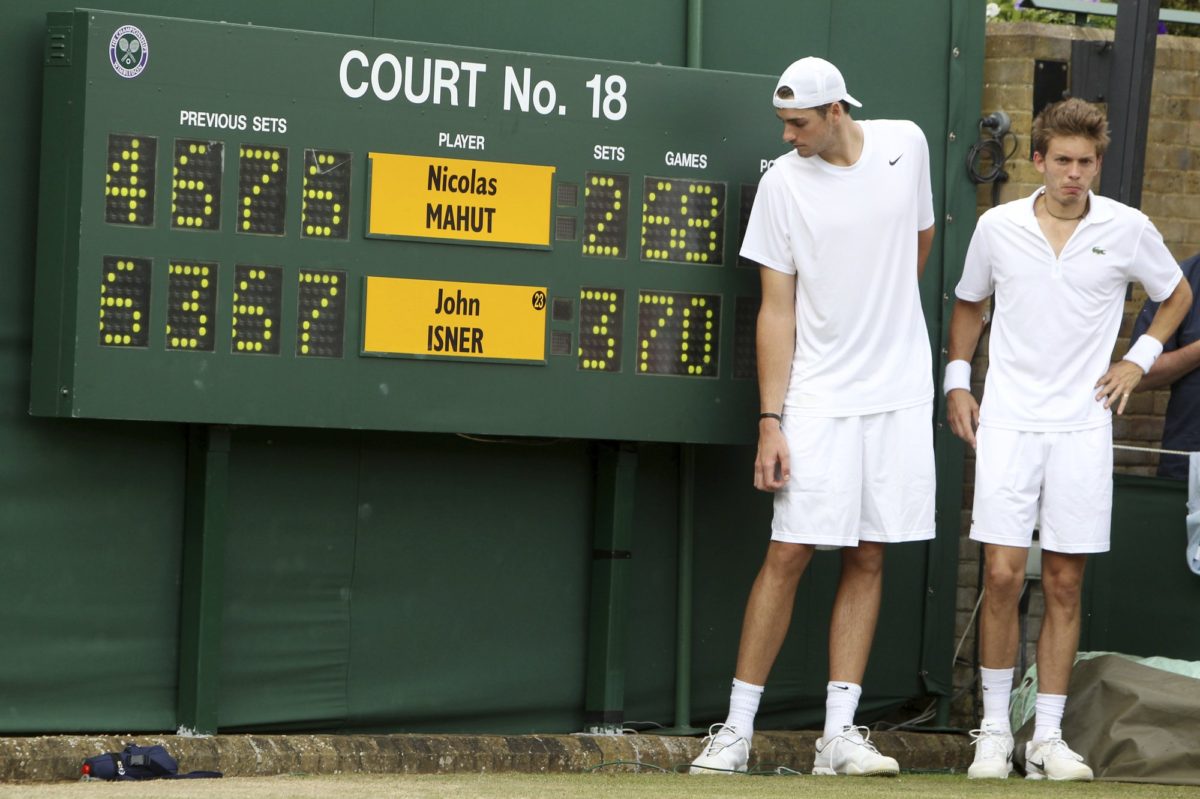
LONDON (AP) — That epic 70-68 fifth set at Wimbledon will never be matched or surpassed, or even challenged.
The All England Club said Friday it will introduce final-set tiebreakers next year, starting when the score reaches 12-12 in the decider.
The grass-court Grand Slam tournament is the second of the four majors to use a final-set tiebreaker to determine a singles match — either the fifth set in a men’s match or the third set for the women. The U.S. Open, however, starts its final-set tiebreakers at 6-6.
At the Australian Open and the French Open, players still have to win by two games in the final set in singles matches.
“Our view was that the time had come to introduce a tie-break method for matches that had not reached their natural conclusion at a reasonable point during the deciding set,” Wimbledon chairman Philip Brook said in a statement.
In a tiebreaker, the first player to get seven points — leading by at least two points — wins the set.
In 2010, John Isner and Nicolas Mahut played the longest match in tennis history at Wimbledon. The match took more than 11 hours and lasted over three days before Isner won 70-68 in the final set.
According to Wimbledon CEO Richard Lewis, many players were in favor of the change.
“There were mixed views, it’s fair to say. But predominantly, players favored the final-set tiebreak,” Lewis said. “They recognize the quality of tennis goes down, players start playing not to lose rather than the excitement or the determination to win. And they recognize it affects the quality of the matches on subsequent rounds.”
This year, eventual finalist Kevin Anderson played a pair of long matches late in the tournament. He beat eight-time champion Roger Federer 13-11 in the fifth set in the quarterfinals, and then defeated Isner 26-24 in the fifth in the semifinals — the second-longest match in the history of a tournament that began in 1877.
In the other semifinal match, Novak Djokovic beat Rafael Nadal 10-8 in the fifth set.
Two of those three matches would still be possible.
“While we know the instances of matches extending deep into the final set are rare, we feel that a tie-break at 12-12 strikes an equitable balance between allowing players ample opportunity to complete the match to advantage, while also providing certainty that the match will reach a conclusion in an acceptable timeframe,” Brook said.
Other notable long matches include Federer’s victory over Andy Roddick in the 2009 final, winning 16-14 in the fifth set.
Tiebreakers were first introduced at Wimbledon in 1971, but they started at 8-8 instead of 6-6 and were not used in deciding sets.
Before that, all sets had to be won by two games, including Margaret Court’s 14-12, 11-9 win over Billie Jean King in the 1970 final.


